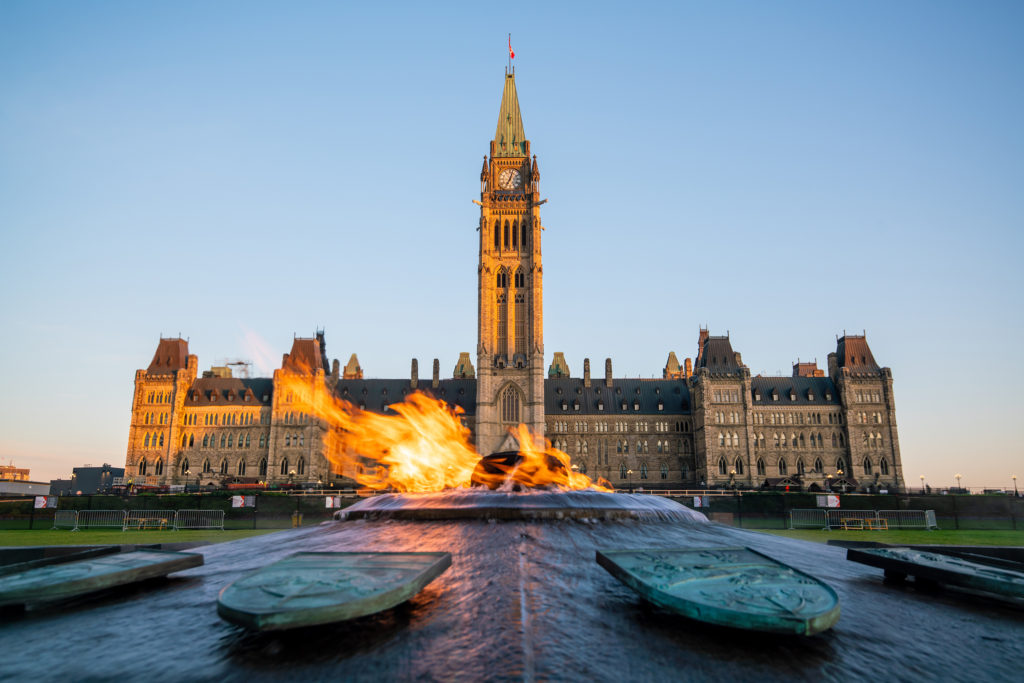Colin McClelland | March 28, 2023 |

Parliament Hill in Ottawa, Ontario. Credit: Adobe Stock
Ottawa plans to spend C$21 billion ($15.4bn) over five years on clean technology in one of the main platforms affecting the mining industry contained in Tuesday’s annual federal budget.

Finance Minister Chrystia Freeland said the amount, including a 30% investment tax credit to boost clean-tech manufacturing, especially in the electric vehicle (EV) supply chain, could expand to C$80 billion ($59bn) by 2034.
“We are going to make Canada a reliable supplier of clean energy to the world,” Freeland said in Parliament. “And, from critical minerals to electric vehicles, we are going to ensure that Canadian workers mine, and process, and build, and sell the goods and the resources that our allies need.”
The tax credit for capital investments in manufacturing equipment will apply to purchases of equipment used to extract and process critical minerals used in EVs and to purchase equipment used in manufacturing along the entire EV supply chain, including for batteries.
Pierre Gratton, president and CEO of the Canadian Mining Association, welcomed the budget initiatives.
“I am optimistic that with these new measures Canada will be able to attract new private sector investment into Canada’s mining, smelting and refining industry, creating well-paid jobs for Indigenous and non-Indigenous Canadians across the country,” Gratton said in a statement.
Freeland had promised to boost Canada’s green energy stimulus after the United States approved the Inflation Reduction Act last year. It provides nearly $370 billion in incentives for investing in clean technology.
Last year, Canada approved nearly C$3.8 billion for spending in a critical minerals strategy until 2030. It included $1.5 billion for infrastructure, roads and power lines, the same amount for projects, as well as money for research and development, such as geoscience.
The clean technology subsidies announced on Tuesday are to be based on the wages earned by workers in the companies applying for aid; the higher the wages, the more financial help they would qualify for, according to the budget.
The budget also contains a 15% refundable tax credit for eligible investments in non-emitting electricity generation systems. These also include abated natural gas electricity-fired electricity generation, stationary electricity storage systems, and equipment for the transmission of electricity between provinces and territories.
There’s also a commitment to improve the efficiency of the impact assessment and permitting processes for major projects by the end of 2023.
The budget formalizes amounts contained in last year’s critical minerals strategy, such as a re-allocating C$1.5 billion within the Strategic Innovation Fund to support projects in sectors including clean technologies, critical minerals and industrial transformation. It also marks C$1.5 billion of the critical minerals infrastructure fund to help pay for energy and transportation projects associated with critical minerals.
The Liberal government also said it would support loans to Indigenous communities to support them in purchasing equity stakes in major projects through the Canada Infrastructure Bank.
Regarding the total amount of spending, Canada’s budget deficit will expand to C$40.1 billion next year instead of shrinking to a balanced budget by 2028, as put forward in the fall economic statement last year, because of greater chances of a recession and higher debt servicing costs.
The country recorded a deficit of C$6.44 billion in the first 10 months of 2022-2023 fiscal year, compared with a deficit of C$75.29 billion during the same period in the last fiscal year, the finance ministry said.
No comments:
Post a Comment